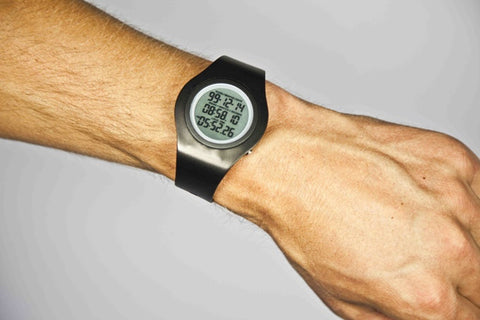Note: The following is an excerpt from a compilation book published by Phaidon called 'Fear and Love' which is on display at the new Design Museum in London. The excerpt was taken from the piece written by Susan Elizabeth Ryan to whom Tikker contributed the photo of the Tikker watch.
Quantified Self vs. ‘No-self’
The wearable technologies (WT) industry has leveraged itself on our intense fixation with ourselves as bundles of flesh and functions that are increasingly monitored and measured, a movement termed the ‘Quantified Self’ by Gary Wolf in 2007. The proliferation of health-monitoring devices drives expectations for WT. In 2013, Forbes predicted that 2014 would be the “Year of the Wearable”, and a year later Gartner Market Research reported that personal health and fitness devices would be a five billion dollar market by 2016. The problem is, the more data we generate about ourselves, the more data we encounter-and the larger the task of maintaining systems, training plans, and upgrades, all seeming to manifest a control society beyond even Deleuze’s wildest dreams.
If this trend continues, it seems likely that devices will eventually challenge our notion of dress as based on making choices (Lipovetsky), and more towards a different paradigm based on analyzing biometrics. And the possibilities are expanding. Already a macabre chronometer watch called Tikker, from a start-up company crowdfunded in 2013, calculates its wearer’s life expectancy and proceeds to count down to her projected time of death. Carpe Diem!

